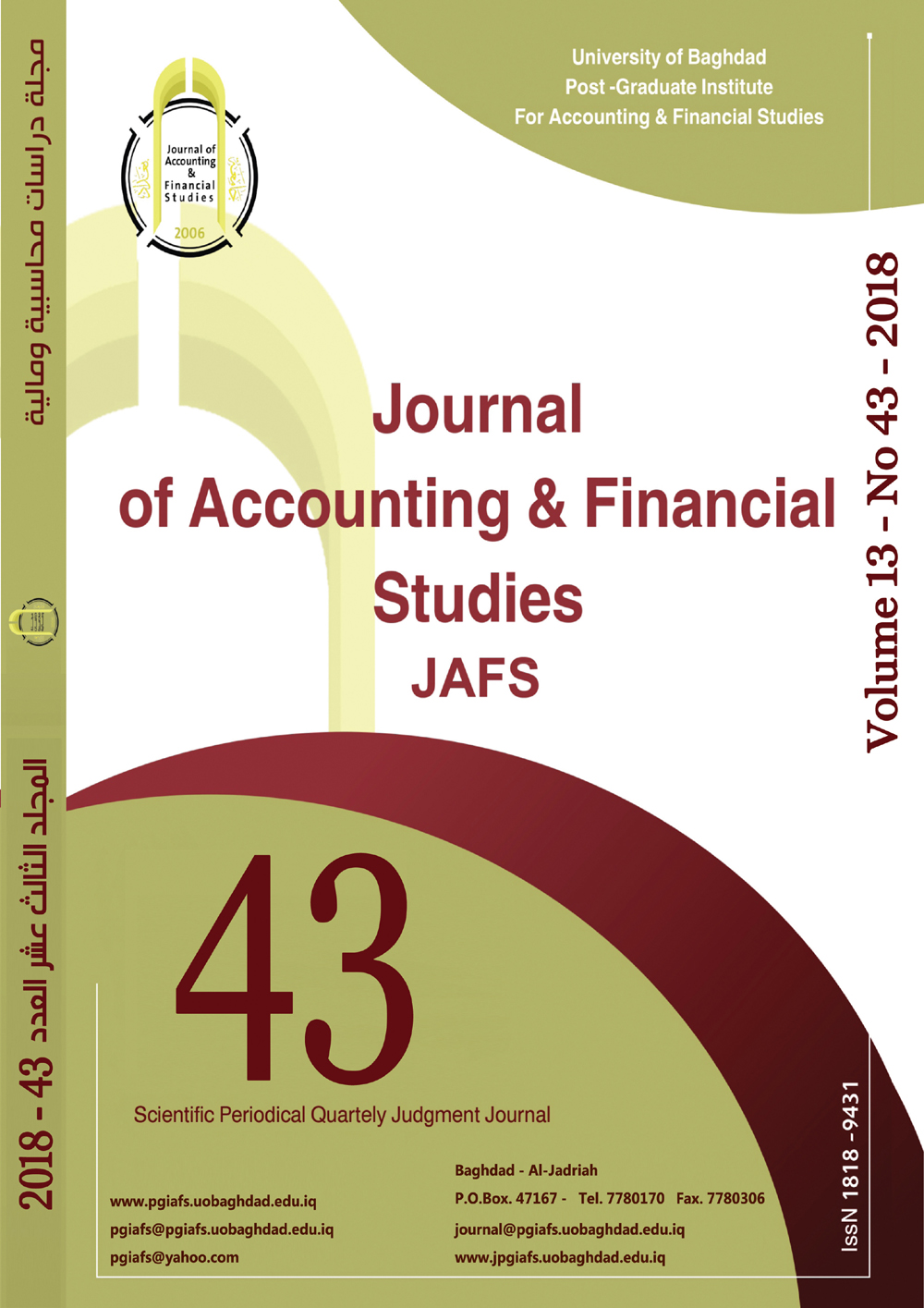Impact of the Lean Thinking on the Rationalization Costs & Achieving Customer Satisfaction
An applied Research at Ur State company Electrical Cables industries
DOI:
https://doi.org/10.34093/jafs.v13i43.58Abstract
The research explored the impact of applying lean thinking With all that carries this term of goals, trends, principles, foundations and concepts, The possibility of applying it in institutions, including Ur public company, an industrial company, And the only one in Iraq specialized in the manufacture of cables, Electrical Wires and the aluminum industry ,Which has been applied to the curriculum of lean thinking , The problem of research is that the institutions, including the company (research sample), adopt and practice traditional administrative, financial and technical methods without relying on modern curricula and ideas, including the subject of our research, In order to achieve the research objectives, the research was divided into four chapters.According to what was discussed in both theoretical and practical aspect of the research, the researcher reached a number of conclusions and recommendations, and the most important conclusions are:
- An important aspect of lean thinking philosophy is to identify activities that add value from that do not add value and try to get rid of them or reduce them because they do not add value to the customer, and he is unprepared and unable to put an alternative to it. Lean thinking has given importance to the time and was keen to remove the losses in time, both the time of the worker or the waiting time of the customer, And as an important resource in an era of rapid changes in desires and needs and technological changes.
- The research points to the benefits of lean thinking, which are improvements at the operational, administrative and strategic levels, Each of them has been divided into many benefits that have a positive impact if lean thinking was applied to them It is comprehensive benefits and extend to include all aspects of the internal institution and its relationship with the external aspects including the customer, distributors, suppliers and others who represent an integral mass for the benefit of all.
- Many of the lean thinking tools have been applied to the research, These tools have helped the institution to apply lean thinking, each tool has its function including workplace regulation and visual control, continuous improvement, avoiding over-inventory and loss of time, The work mechanism of the flow and withdrawal systems, the identification of activities that add value and avoid errors, defects and accidents, the level and diversity of the product mix and the identification of sufficient time, maintenance, holidays identification, reduction of preparation and installation time, manpower empowerment , analysis of the root causes of problems and identification of defects and problems in production processes All these tools transferred the institution from an institution that follows the traditional methods in processing production processes to the concept of achieving the objectives of the institution in short, medium and long term and the most important objectives is the perspective of the client, which institution's seeks to win the satisfaction.The most important recommendations are:
- The necessity to adopt the five principles of the lean thinking referred to by the research which is:
- Determining the value, desires and needs of the customer in order to achieve his satisfaction, And satisfaction is achieved through competitive price of competitive goods in the market, high quality and shorter Preparation time.
- By determining the value stream for each product family to identify activities and times that add value from that does not add value and make the delivery period shorter, and continuously improve processes through the sunburn of Kaizen.
- Executing the pull, i.e. strengthening the connection and communication between the company and the customer. This is done by strengthening the relations between them through advertising the company's products, and knowing what the customer needs and wants and hear the customer's voice.
- The application of the flow, through the identification of the requirements, including strengthening the relationship with the supplier of raw materials and the preparation of working cadres and machines and machinery, and through the speed of information access to the company. The process of creating a realistic flow is reliable and this is based on the application of lean tools, which dealt with the research in some detail, Applying it is the main source that prevents the occurrence of losses and waste in the resources of the company.
- The necessity to pay attention to the activity of the marketing department, being the guide and promoter of the company's products in the local markets and the need to strengthen relations with ministries and companies requesting the product, including the Ministry of Electricity and companies of the Ministry of Industry and companies of the Ministry of Housing and Construction and the Ministry of Defense and Oil and work to increase the marketing outlets of the company in the rest of the provinces and not limited to the offices of Baghdad and Basra.
- The necessity to deal with the cases of factories suspended from work by taking adequate measures and conducting studies regarding their operation or disposal, as the company incurs additional costs and burdens that increase the expenses of the company.
- The necessity to treat the cases of the increasing in spending on the element of direct wages as it burdens the company by increasing a basic element of the costs elements, which increases the cost of the product.
Downloads
Published
Issue
Section
License
The copyright is transferred to the journal when the researcher is notified of the acceptance of his research submitted for publication in the journal.



